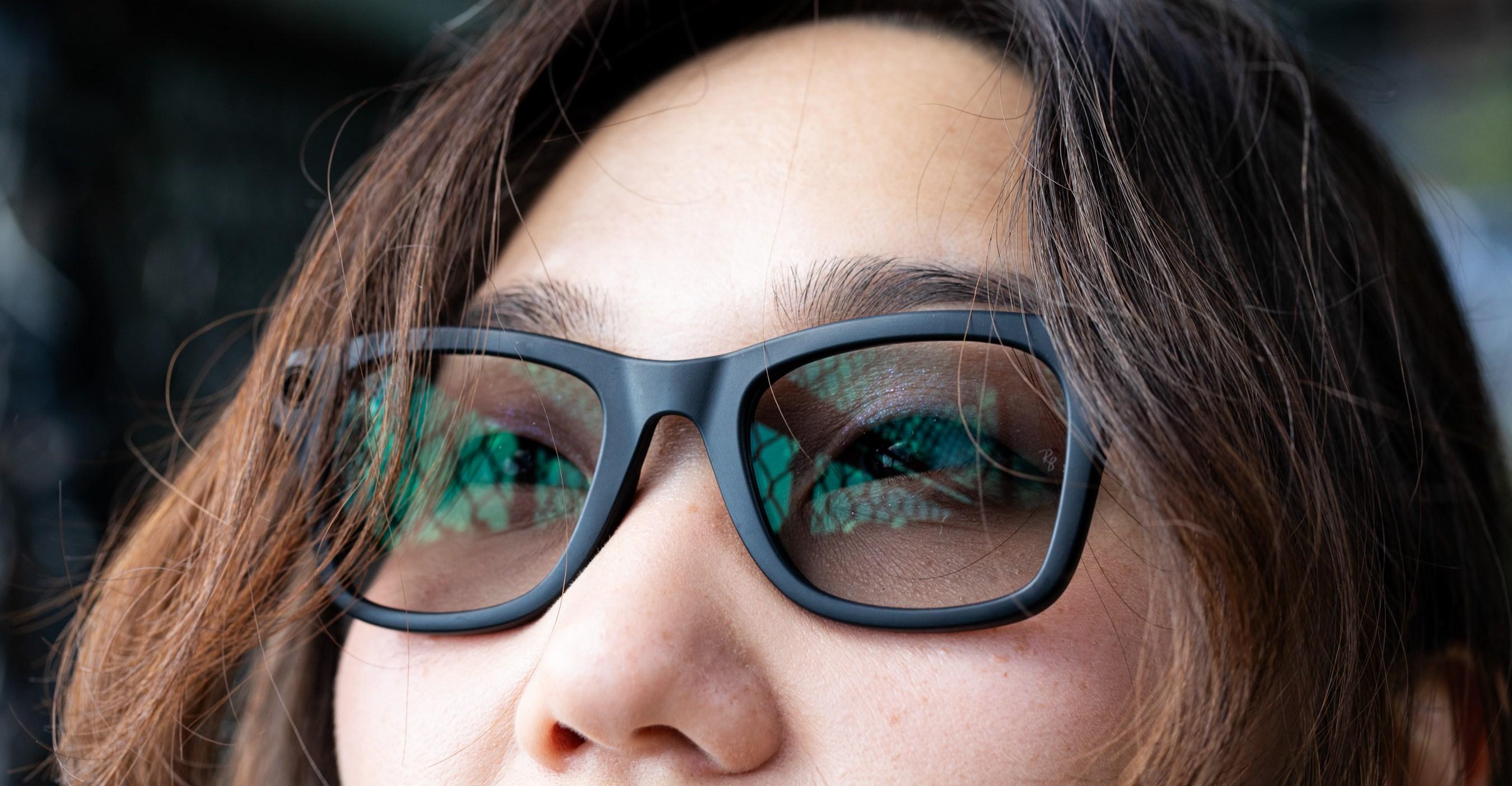Warning: Spoilers ahead for season 2 of Amazon Prime’s Good Omens
- Home
- Technology
- News
In Good Omens, diversity is divine
The second season of Amazon Prime’s Good Omens highlights how queer romance and disability representation can — and should — be included across the fantasy genre.


With the release of the second season of Good Omens on July 28th, writer Neil Gaiman has officially (and rather devastatingly) put any accusations of queerbaiting to bed. Leaving very little room for interpretation, Crowley and Aziraphale — the respectively demonic and angelic main characters of the Amazon fantasy-comedy series — engaged in some distressingly emotional snogging during the last moments of this season’s final episode, thereby ending over 30 years of speculation about the nature of their relationship. The fight is over. The shippers have won.
Well, not just the shippers.
I’ll provide some context for those of you who aren’t chronically online: “shipping” refers to the act of endorsing a romantic or sexual relationship between two real or fictitious characters. The term comes from the X-Files fandom in the ’90s, which was generally split into “relationshippers” and “Noromo” fans who... well, I think you can guess their feelings on the central couple of Mulder and Scully. Over time, “relationshipper” shortened to “shipper,” and other fandoms adopted the term when talking about their own favorite couples in fandom.
Ineffable Husbands — the ship name for Crowely and Aziraphale — emerged after Good Omens was released in 2019, but some fans have endorsed a relationship between the two since the original novel penned by Gaiman and the late Terry Pratchett debuted in 1990. The characters are frequently described (in both the book and the series) as sexless cosmic beings that don’t need to understand silly human concepts like gender or sexuality. But there’s an obvious inclination to view them as male-coded, especially with David Tennant and Michael Sheen’s respective portrayals of Crowley and Aziraphale.
An overwhelming majority of the intimate interactions depicted in the second season were visibly, undeniably queer. It wasn’t just that core relationship between these two celestial beings. There’s a secondary storyline that focuses on a lesbian love story, alongside additional romantic representation for other LGBTQ and / or nonbinary characters. Plus, a vast majority of these interactions take place in London’s Soho district — the beating heart of the city’s queer community — which has lost several of its once-iconic LGBTQ+ spaces to redevelopments and gentrification over the years. Even this small detail felt like an act of defiance.
I went into this season with the anticipation that I’d be disappointed because it feels like fantasy media hates being direct about non-heterosexual romance. And when it does include them, the show usually gets canceled immediately after. But while Good Omens hasn’t officially been renewed, that appears to be a quirk of the strike — with most involved planning for a third season. This isn’t a show likely to be cut off at the knees suddenly. So the minute Crowley’s lips canonically smashed into Aziraphale’s, I shrieked, sobbed, and called every other queer friend I had to demand they add the series to their watch list. It’s been years since a show made me feel so validated.
During a press junket ahead of the show’s premiere (which took place before the SAG-AFTRA strike officially began), I spoke to David Tennant and Michael Sheen about the new direction their characters took this season.
Even before the first series came out, the book already had a massive online following where people were interpreting the relationship between the two main characters as closer than what was already implied. Did that influence how you portrayed the characters?
David Tennant: I think you just have to play the characters as they are. And you have to allow people to decide what they may or may not think that means or implies, you know. The subtext is to be read by the audience, isn’t it? And I don’t think that you play anything specifically because you’re aware that certain people are hoping the relationship will develop in a certain way.
Michael Sheen: And I think Neil had always been very clear that these aren’t humans, and therefore human labels don’t apply in the same way. But I was always very interested from the very beginning about playing a character who is sort of [comprised] of love, and how that might manifest itself in a very particular relationship with another being. So I found it interesting to see how the more that Aziraphale gets comfortable with living on Earth and being among humans and being among human things, how might that be expressed through him and in terms of this relationship.
I found that very interesting to explore in what we were doing. But like I say, you have to kind of resist putting certain labels on it that aren’t to do with these supernatural beings. They are multifaceted with lots of different aspects. And as Neil played around with in Sandman as well with that character [Dream], they could manifest themselves at different times, as different genders, different sexes, and different ages. There’s no end to the possibilities for them. So there’s also no end to the possibilities of what their relationship can be.
Did either of you have any input into how your characters were going to develop in season 2 now that we’ve moved away from the source material?
MS: Well, only so much, I suppose, in how the relationship developed on camera, how we interpreted the scenes, and inhabited the characters. I think Neil is incredibly open. He’s a fan as much as anybody else of the story and the characters. And I think watching us playing those characters probably suggested certain things to him within the parameters of what he and Terry had already worked out. We brought some of the ideas they had for what could happen after the book into season 1. So their ideas for where the story could go, we still haven’t finished yet. But in terms of actually suggesting things, I mean, Neil tends to have a better handle on that sort of thing.
DT: He’s quite good at all that stuff, isn’t he? So you just want to leave him to it. The last thing you want to do is try to limit his imagination.
MS: [jokingly] “Gaiman — shut it! This is what needs to happen, mate!”
DT: Yeah, we just sit back and let the scripts roll in.
None of this is to say that Good Omens is the only TV series setting a new standard for queer representation. The swashbuckling pirate comedy Our Flag Means Death has made similar waves (sorry) for directly depicting relationships across the LGBTQ+ spectrum. Coming-of-age stories like Netflix’s Heartstopper also excel in representing queer romances. Genre shows like Invasion, Warrior Nun, and The Wheel of Time include major romances centered around two women, but the romances, particularly in the fantasy genre, are rarely centered on queer masculine-presenting characters.
With its second season, Good Omens has managed to create a wonderfully diverse world in a setting where, theoretically, anything is possible. And it does so unapologetically and positively — a host of characters are verbally identified as being queer or genderless, which is a breath of fresh air compared to shows that leave these things open to interpretation, thereby denying viewers from seeing themselves officially represented. Similarly, several visibly disabled characters appear in this season, and nobody ever tries to use those physical differences as a plot device. In fact, none of the other characters even mention the differences between them.
Disability representation is something the wider fantasy genre also struggles with. When creator and disability consultant Mark Thompson created the “Combat Wheelchair” for the Dungeons & Dragons tabletop roleplaying game, some players argued that it was unnecessary because in-game magic would have eradicated all disabilities in the D&D universe. Yet, it’s wildly offensive to suggest that a game known for providing unimaginably limitless gameplay possibilities should prevent its players from representing themselves in that universe.
I spoke to actor, comedian, and disability rights activist Liz Carr about her portrayal of Saraqael, an archangel in season 2 of Good Omens that, frankly, seems to be the only heavenly employee who’s any good at their job. “I just really loved the casting choices,” she said. “The character was not written for a wheelchair user, so they chose somebody known for being very sarcastic, i.e., the person who’s right for the role.”
“I got approached, and Neil said that, ‘In Heaven, you will be flying. As a wheelchair user, your chair will fly, and on Earth, you’ll be able to form miracles where anything inaccessible will become accessible.’ Cast me or a disabled person, and it gives such fun and such richness, such opportunity. And for people to watch and go, ‘I’ve never seen that. I’ve never seen me’ ... Heaven is about perfect bodies, cured beings. So to not be that — I think that’s very funny.”
Other angels are also depicted with disabilities this season. During the flashback in episode 2, the choir of angels sent to reward Job and his wife for their commitment to God includes individuals with Down syndrome and limb differences. These actors aren’t credited, but their inclusion means that Saraqael isn’t a token inclusion — in Gaiman and Pratchett’s world, anyone can be an angel.
The cliffhanger at the end of the final episode of Good Omens season 2 suggests that the show’s diversity and inclusivity won’t slow down any in subsequent episodes. Season 3 has yet to be greenlit (and likely won’t be anytime soon due to the ongoing writers and actors strikes), but Gaiman says he already has it all planned out should it be approved. If all goes well, book fans may yet get to see the long-teased retirement cottage in the UK’s South Downs.

Control’s action-RPG sequel launches in 2026
- 13 hours ago
Govt slashes diesel price by Rs14 per litre
- 15 hours ago
Australia plans tougher gun laws after police say father and son killed 15 at Bondi Beach
- 20 hours ago

Zillow’s short-sighted move to overlook climate risk
- 2 hours ago

Disney wants to drag you into the slop
- 13 hours ago

The biggest mosquito-borne disease in the world has a cure. There’s just one problem
- 11 hours ago

Why Republicans in Congress are turning against Trump
- 11 hours ago
FIFA hails 5M WC ticket requests amid backlash
- 12 hours ago

IHC summons Registrar Karachi University in Justice Jahangiri’s degree case
- 21 hours ago
Police recover gold from accused's husband in Dr Warda murder case
- 20 hours ago

Chatbots are struggling with suicide hotline numbers
- 13 hours ago

Remember Google Stadia? Steam finally made its gamepad worth rescuing
- 13 hours ago

:format(webp)/cdn.vox-cdn.com/uploads/chorus_asset/file/24858644/Screenshot_2023_08_18_154739.jpg)
:format(webp)/cdn.vox-cdn.com/uploads/chorus_asset/file/24858646/Screenshot_2023_08_18_154605.jpg)
:format(webp)/cdn.vox-cdn.com/uploads/chorus_asset/file/24858647/Screenshot_2023_08_18_154720.jpg)
:format(webp)/cdn.vox-cdn.com/uploads/chorus_asset/file/24858649/Screenshot_2023_08_18_154637.jpg)





